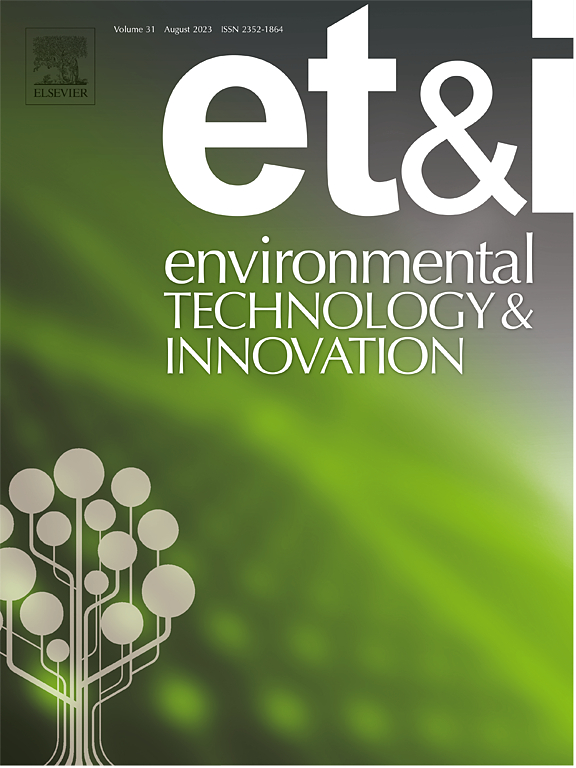Neutral initial pH enhances the formation of humic acid by inhibiting the growth of Lactobacillus in food waste composting
IF 6.7
2区 环境科学与生态学
Q1 BIOTECHNOLOGY & APPLIED MICROBIOLOGY
引用次数: 0
Abstract
Composting was the main way to treat food waste and achieve its resource utilization, but the fermentation of food waste could easily produce acid, which affects the microbial community of composting. As of now, the impact of this process on humification was still unclear. This study investigated the effects of initial pH on humic acid formation during food waste (FW) composting, as well as the microbial regulatory mechanisms under pH conditions of 5.0, 6.0 and 7.0. Our study investigated that adjusting the initial pH to 6.6, especially in 7.0, promoted total organic carbon degradation and compost maturation, as indicated by germination index and decreased electrical conductivity. However, higher pH levels also increased total nitrogen loss. Adjusting the pH to 6.0 or 7.0 facilitated the conversion of reducing sugars, amino acids and polyphenols into humic acid and promoted the formation of complex HA components. Our results also indicated that pH regulation inhibited Lactobacillus growth, reshaped bacterial composition, influenced amino acid and polyphenol dynamics, and ultimately enhanced humic acid formation in initial pH of 6.0, especially in initial pH 7.0. From a cost perspective, it was recommended to adjust the initial pH of food waste to 6.0 for composting.
中性初始pH值通过抑制食物垃圾堆肥中乳酸杆菌的生长来促进腐植酸的形成
堆肥是处理食物垃圾并实现其资源化利用的主要途径,但食物垃圾发酵容易产生酸,影响堆肥的微生物群落。到目前为止,这一过程对腐殖化的影响尚不清楚。研究了初始pH对食物垃圾(FW)堆肥过程中腐植酸形成的影响,以及pH 5.0、6.0和7.0条件下微生物的调控机制。我们的研究发现,将初始pH调整到6.6,特别是在7.0时,通过萌发指数和电导率的降低,促进了总有机碳的降解和堆肥的成熟。然而,较高的pH值也增加了总氮损失。将pH调节到6.0或7.0有利于还原糖、氨基酸和多酚转化为腐植酸,促进复合HA组分的形成。我们的研究结果还表明,pH调节抑制了乳酸杆菌的生长,重塑了细菌的组成,影响了氨基酸和多酚的动力学,最终促进了腐殖酸的形成,在初始pH为6.0时,尤其是在初始pH为7.0时。从成本角度考虑,建议将餐厨垃圾初始pH调至6.0进行堆肥。
本文章由计算机程序翻译,如有差异,请以英文原文为准。
求助全文
约1分钟内获得全文
求助全文
来源期刊

Environmental Technology & Innovation
Environmental Science-General Environmental Science
CiteScore
14.00
自引率
4.20%
发文量
435
审稿时长
74 days
期刊介绍:
Environmental Technology & Innovation adopts a challenge-oriented approach to solutions by integrating natural sciences to promote a sustainable future. The journal aims to foster the creation and development of innovative products, technologies, and ideas that enhance the environment, with impacts across soil, air, water, and food in rural and urban areas.
As a platform for disseminating scientific evidence for environmental protection and sustainable development, the journal emphasizes fundamental science, methodologies, tools, techniques, and policy considerations. It emphasizes the importance of science and technology in environmental benefits, including smarter, cleaner technologies for environmental protection, more efficient resource processing methods, and the evidence supporting their effectiveness.
 求助内容:
求助内容: 应助结果提醒方式:
应助结果提醒方式:


